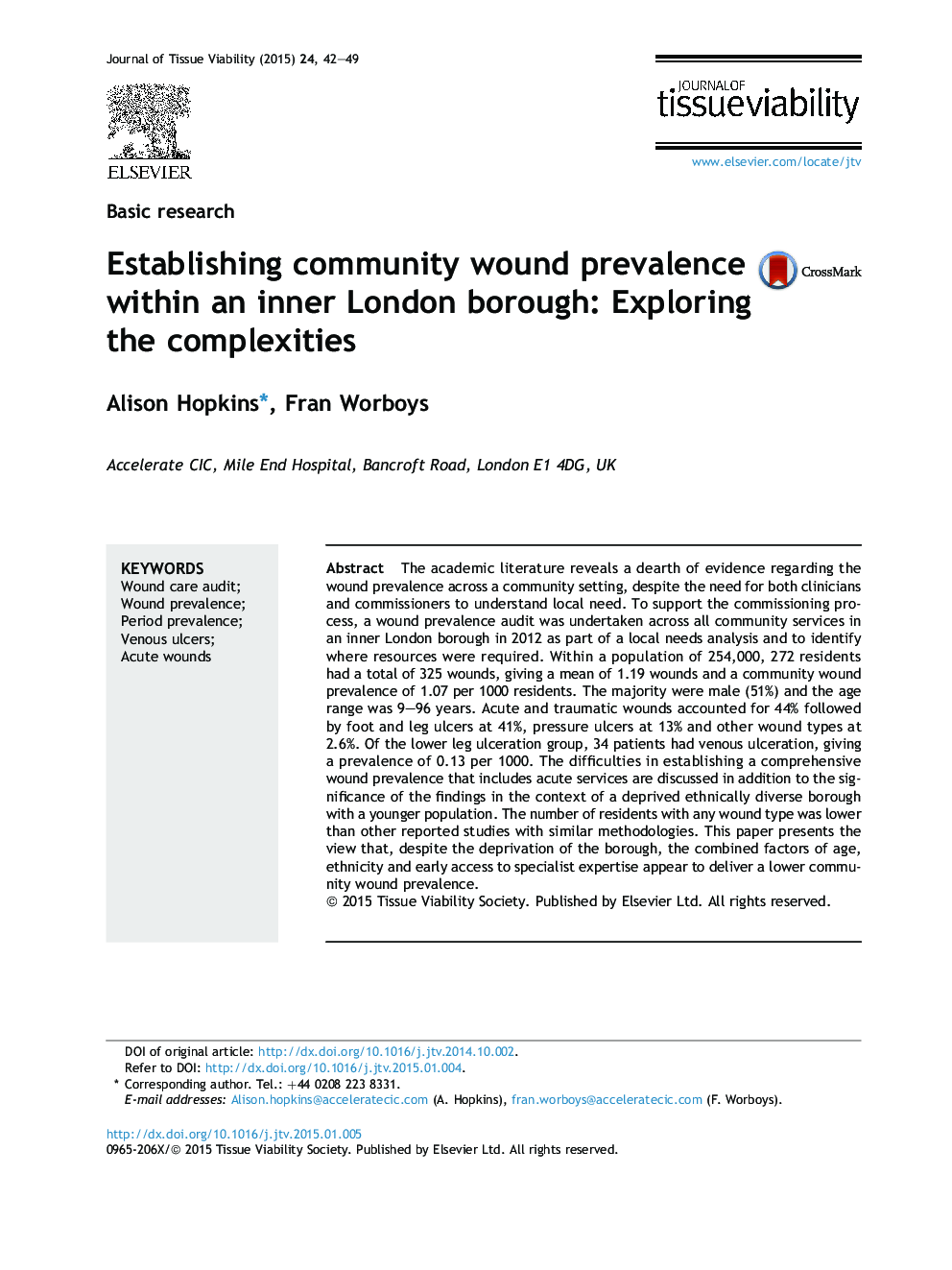| Article ID | Journal | Published Year | Pages | File Type |
|---|---|---|---|---|
| 5870747 | Journal of Tissue Viability | 2015 | 8 Pages |
The academic literature reveals a dearth of evidence regarding the wound prevalence across a community setting, despite the need for both clinicians and commissioners to understand local need. To support the commissioning process, a wound prevalence audit was undertaken across all community services in an inner London borough in 2012 as part of a local needs analysis and to identify where resources were required. Within a population of 254,000, 272 residents had a total of 325 wounds, giving a mean of 1.19 wounds and a community wound prevalence of 1.07 per 1000 residents. The majority were male (51%) and the age range was 9-96 years. Acute and traumatic wounds accounted for 44% followed by foot and leg ulcers at 41%, pressure ulcers at 13% and other wound types at 2.6%. Of the lower leg ulceration group, 34 patients had venous ulceration, giving a prevalence of 0.13 per 1000. The difficulties in establishing a comprehensive wound prevalence that includes acute services are discussed in addition to the significance of the findings in the context of a deprived ethnically diverse borough with a younger population. The number of residents with any wound type was lower than other reported studies with similar methodologies. This paper presents the view that, despite the deprivation of the borough, the combined factors of age, ethnicity and early access to specialist expertise appear to deliver a lower community wound prevalence.
